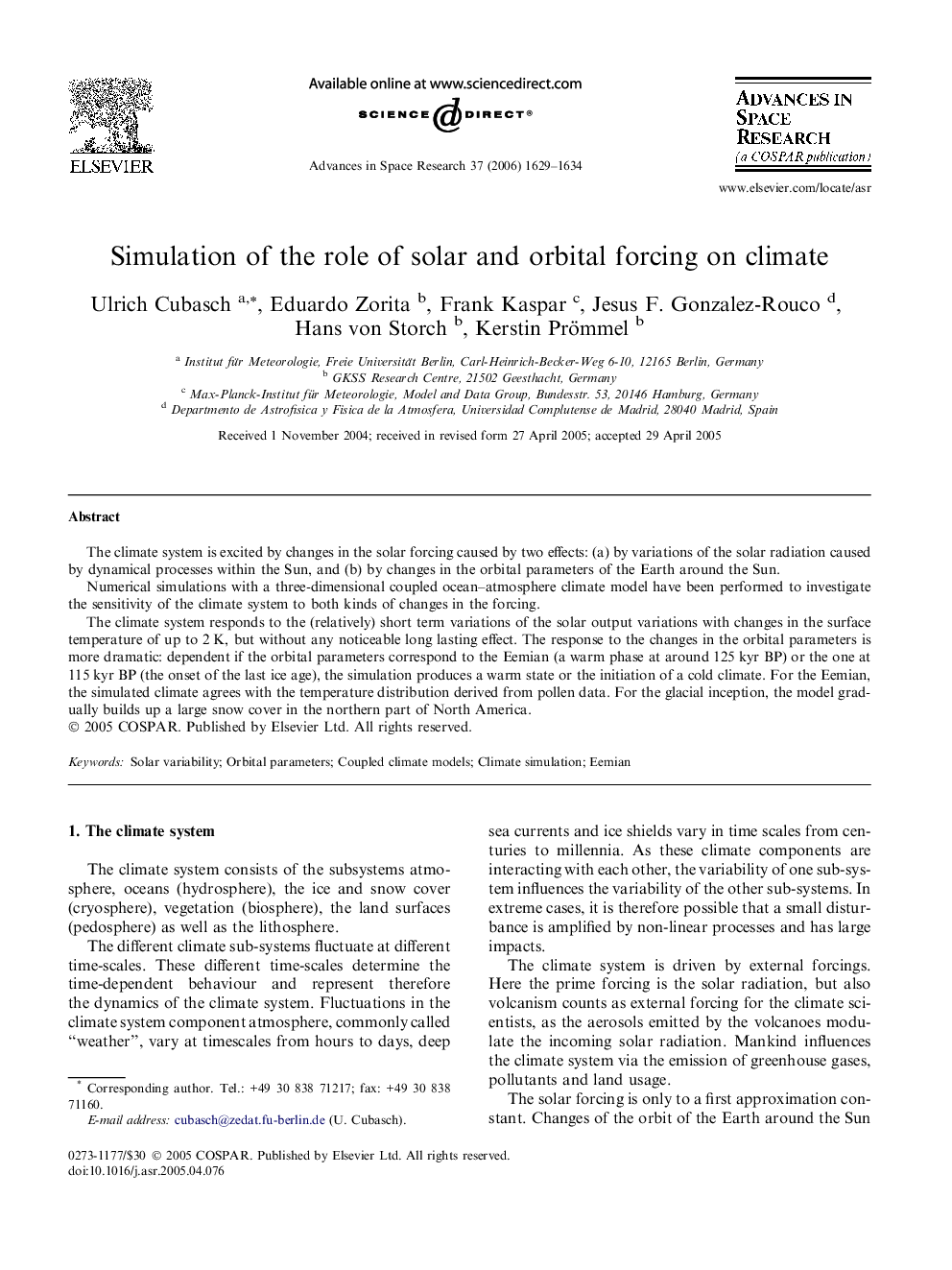| Article ID | Journal | Published Year | Pages | File Type |
|---|---|---|---|---|
| 1768832 | Advances in Space Research | 2006 | 6 Pages |
Abstract
The climate system responds to the (relatively) short term variations of the solar output variations with changes in the surface temperature of up to 2Â K, but without any noticeable long lasting effect. The response to the changes in the orbital parameters is more dramatic: dependent if the orbital parameters correspond to the Eemian (a warm phase at around 125Â kyr BP) or the one at 115Â kyr BP (the onset of the last ice age), the simulation produces a warm state or the initiation of a cold climate. For the Eemian, the simulated climate agrees with the temperature distribution derived from pollen data. For the glacial inception, the model gradually builds up a large snow cover in the northern part of North America.
Related Topics
Physical Sciences and Engineering
Earth and Planetary Sciences
Space and Planetary Science
Authors
Ulrich Cubasch, Eduardo Zorita, Frank Kaspar, Jesus F. Gonzalez-Rouco, Hans von Storch, Kerstin Prömmel,
